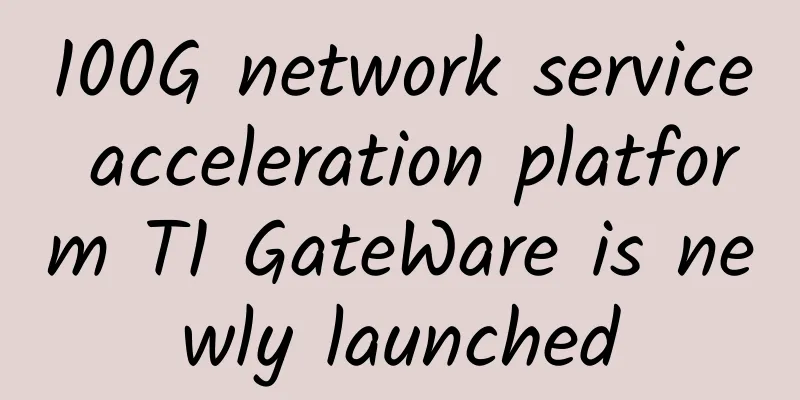How AI and software are driving 5G data center transformation

|
Today, we are witnessing a huge period of innovation in computing, with the rapid deployment of 5G around the world intertwined with breakthrough developments in data-intensive workloads and generative artificial intelligence. The need for flexibility across the computing ecosystem has never been greater to innovate and explore new types of acceleration, novel system architectures, and new ways to meet the growing demand for data consumption. The additional challenges of rising semiconductor design costs and tightening global energy budgets mean that we are in the midst of a transformation of the global computing infrastructure. The combination of 5G and AI holds tremendous opportunities. 5G technology can provide the high throughput, low latency, and reliable connectivity that AI applications need to collect, transmit, and process large amounts of data. In return, AI can help 5G networks dynamically allocate resources, manage traffic, and detect anomalies. AI can also use 5G to provide personalized, contextualized smart services to users and devices. Together, these two technologies will truly change the way we communicate, work, and live. But there are two sides to every story. 5G and AI present significant challenges to data center operators and customers, as both generate massive amounts of data that needs to be stored, processed, and analyzed in a flexible, timely, economical, and energy-efficient manner. To fully capitalize on this opportunity, data center architects need to find transformative approaches around the way compute is designed, built, and deployed. 5G Virtual RAN: A Key Enabler for Edge Data CentersOne of the key innovations supporting 5G is the virtualized radio access network (vRAN). vRAN is a relatively new deployment model that is gaining popularity. It decouples the cellular baseband processing function from the hardware and runs it as software on general-purpose servers. This can provide greater flexibility, scalability, and efficiency when deploying and managing 5G networks. The economies of scale of virtualized 5G infrastructure can be achieved in a number of ways. First, combining the same computing infrastructure to serve 5G connections and edge applications brings connections and data processing closer to the source; second, software-driven cloud-native infrastructure enables dynamic resource allocation, load balancing, faster configuration, and automated network management, which has a huge impact on operational efficiency. Third, with fiber connections, vRAN can bring together multiple base stations into a centralized server pool, thereby reducing the cost and complexity of 5G infrastructure. By bringing computing power closer to end users and their devices, vRAN can facilitate edge computing while reducing latency and improving performance. But to realize its full potential, vRAN requires computing platforms that can support high throughput, low latency, and deterministic radio signal processing while maintaining very high computational efficiency. It also requires high-speed network interfaces to handle the large amounts of data traffic between servers, radios, and end devices, further emphasizing the need for a transformative approach. Today’s 5G Data Center: CPUs and DPUsTraditional general-purpose CPUs cannot handle the complex and diverse workloads of the 5G vRAN stack. By virtualizing all network functions into software, including the operating system, network layer, applications, and protocols, the traffic within the data center has increased dramatically, reducing CPU efficiency. To meet this challenge, the CPU requires a complementary dedicated acceleration device that can offload the CPU's network tasks to improve performance and efficiency. One of the most popular acceleration devices in today's 5G data centers is the data processing unit (DPU). How AI and software are driving 5G data center transformation Artificial intelligence in 5G infrastructure (Source: Arm) A DPU is a network card with an embedded processor or programmable logic that can perform network functions such as packet processing, encryption/decryption, compression/decompression, load balancing, firewall, routing/switching, and quality of service (QoS). A DPU can help reduce the CPU utilization and power consumption of a server by taking over some network-related tasks, thereby achieving flexibility and programmability in configuring and optimizing network functions according to different scenarios. Heterogeneous computing adds more flexibility for future workloadsWhile today's 5G data centers already leverage CPUs and DPUs to support vRAN and other 5G applications, the next generation of 5G data centers will require greater flexibility in hardware architecture, software platform, and service model. For example, data centers may use GPUs to process complex math, graphics, video, or other large data sets; GPUs or TPUs for machine learning workloads; and FPGAs for programmable logic to address more custom workloads. This type of heterogeneous computing helps improve the performance, efficiency, and scalability of converged intelligent edge data centers that can provide RAN services, cloud computing capabilities, and artificial intelligence application services closer to end users. Ultimately, moving more specialized computing closer to devices and end users can improve latency and enable many of the next-generation use cases promised by 5G. SoftBank, Nvidia, and Arm recently announced a collaboration to create the world's most advanced data center for AI and high-performance computing (HPC). It is one of the best examples of this type of data center transformation currently in place, with specialized processing capabilities. The collaboration is expected to deliver a groundbreaking platform for generative AI and 5G/6G applications based on the Nvidia GH200 Grace Hopper superchip, which SoftBank plans to roll out in new distributed AI data centers across Japan. The new data centers will be more evenly distributed and can handle AI and 5G workloads compared to the data centers used in the past. This will allow them to better operate at peak capacity with low latency and significantly reduce overall energy costs. SoftBank will work with Nvidia to build a data center to pave the way for the rapid deployment of generative AI applications and services around the world. The data center can host generative AI and wireless applications on a multi-tenant general-purpose server platform, thereby being energy-efficient, reducing costs and providing more services. Innovations like these represent a significant inflection point for 5G and AI. Entire data centers are built around the targeted performance delivered by specialized processing, giving operators the operational efficiencies they need to realize the potential of vRAN. In addition, specialized processing enables operators to co-host compute-intensive services, such as AI or 3D video conferencing, in the same physical location - closer to the data, closer to the user. This is critical because flexibility, low latency, and performance efficiency ensure optimal utilization of compute resources and their required capital and energy costs, transforming the TCO (total cost of ownership) of the entire data center. As we look ahead to the next generation of 5G data centers, the need for flexible and efficient computing platforms is critical. To meet the growing demand for data center services driven by 5G and artificial intelligence, the next generation of data centers will be defined by the ability to adapt to new technologies and workloads, and to deliver the performance and efficiency required by businesses and consumers. Therefore, we will continue to view efficient, specialized chips as the foundation for innovation and transformation in this field. |
<<: Data Cabling: Seven Tips for Office Renovations and Relocations
>>: WiFi 7 is here. What are the improvements compared to WiFi 6?
Recommend
Wireless charging has three constraints on market demand
Wireless charging technology has been around for ...
Accelerating NFV interoperability testing
Many service providers have deployed network func...
Ele.me Cheng Yanling: Share the correct way to open the era of multi-active operation and maintenance of the whole site
[51CTO.com original article] On December 1-2, 201...
Learn how to restore IP address in one article!
[[426350]] Recover IP address Given a string cont...
RongCloud's Yang Pan: Empowering Enterprises to Communicate
[51CTO.com original article] As an indispensable ...
Qorvo Announces Increased RF Fusion20TM Module Availability
[[390846]] Qorvo, a supplier of RF solutions for ...
Is predictive maintenance the shortest path for edge computing and artificial intelligence to be implemented in industry?
My previous article, "Once considered the &q...
Aruba changes the rules of the game to drive three major changes in network management
When the first iPhone was released in 2007, Steve...
Where does the strength of 5G factories that “take over” 5G+Industrial Internet come from?
In order to accelerate the industry's quality...
How to identify the protocol of an unfamiliar CAN network?
In a CAN network, all nodes share a bus for data ...
Verizon expands 5G enterprise network to 24 cities in the U.S.
Beijing time, April 16th morning news, the larges...
[6.18] TmhHost: 20% off on CN2 GIA/high-defense cloud servers in Hong Kong/Japan/USA, starting at 35 yuan per month for CN2 in Japan
TmhHost is a Chinese hosting company founded in 2...
Why don’t we have more options for in-building connectivity?
2019 was a transformational year for the telecomm...
Exploring the core idea of the Reactor network model
In the network programming series, we implemented...
Network protocols TCP and UDP
First of all, I want to emphasize that the TCP/IP...









